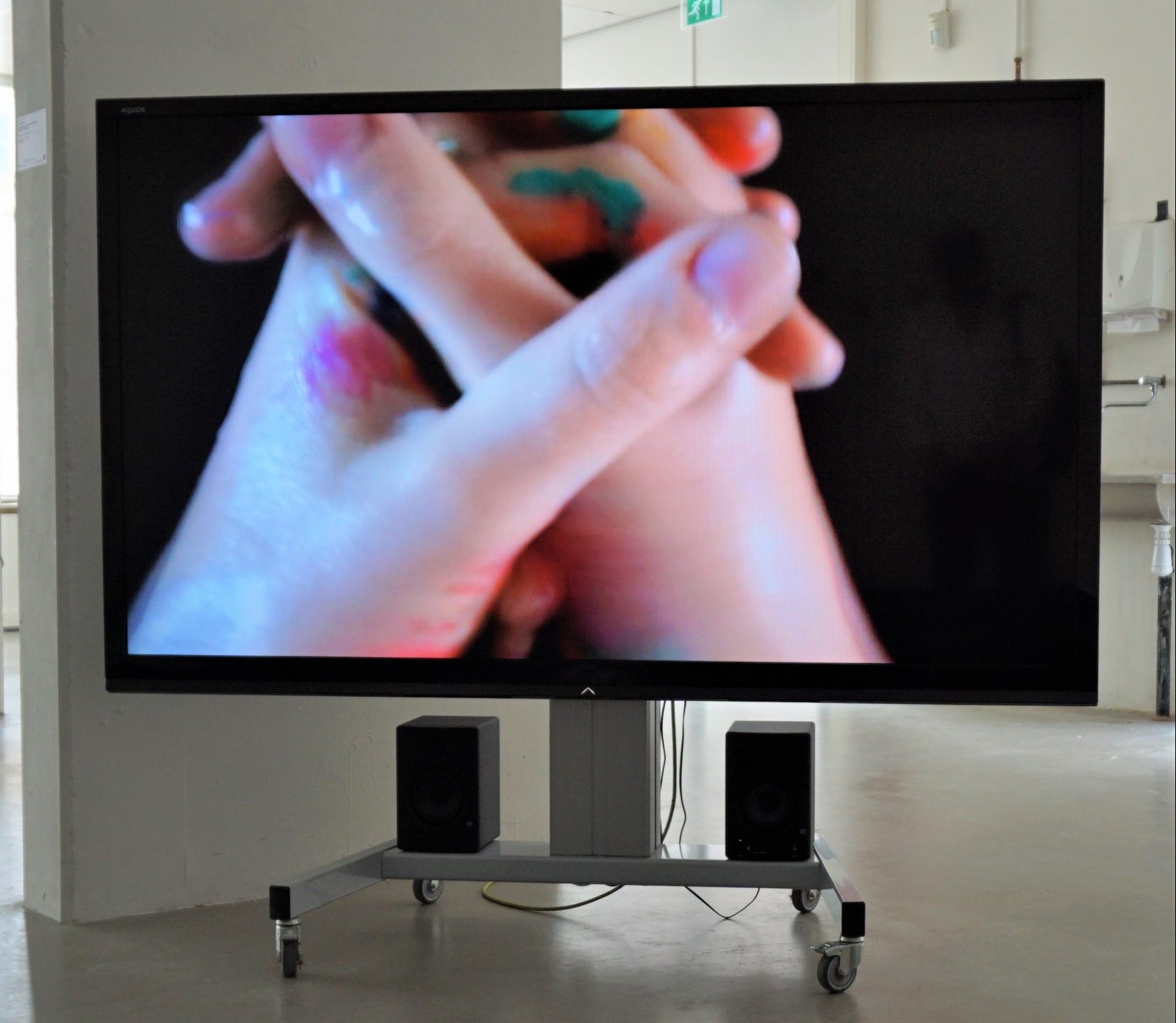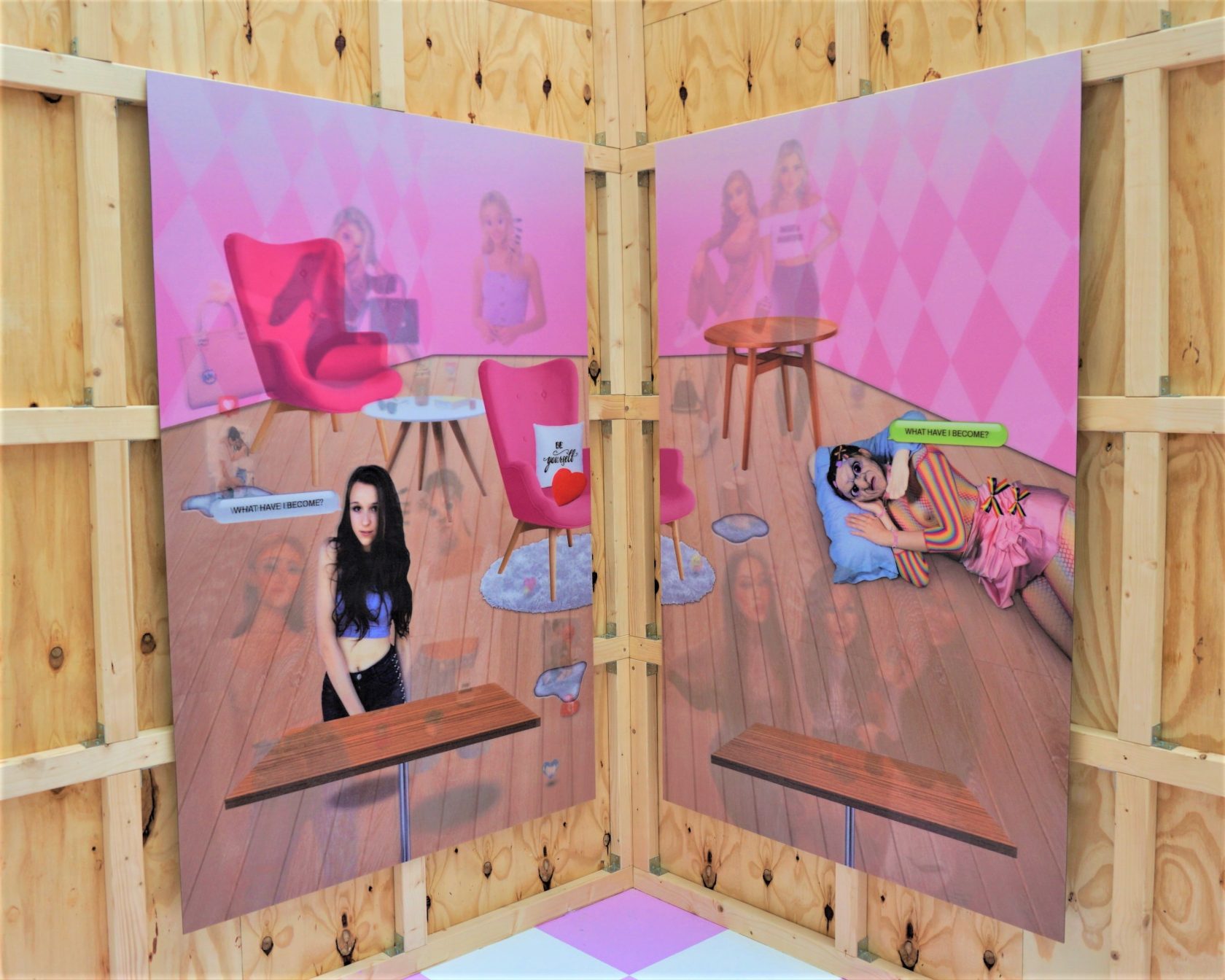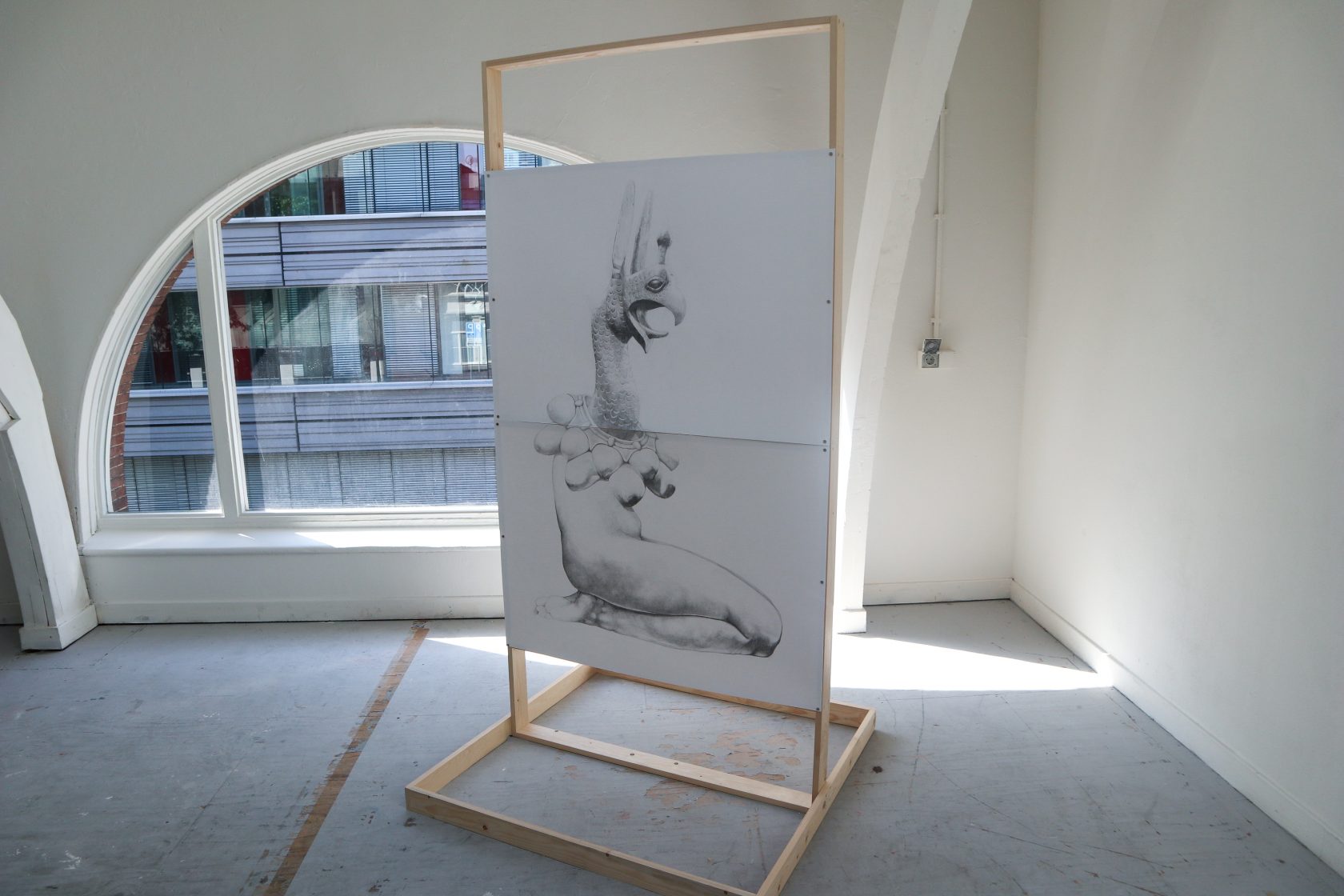KABK Graduation Show: The Female Gaze cannot be overlooked
FEATURE
The ‘Koninklijke Academie van Beeldende Kunsten’ is filled again with a good amount of people during the yearly Graduation Show. It’s a joyful site to see how the graduates interact with the public and speak excitedly about their projects. It looks like there is a social hunger waiting to be stilled.
When I wander through the corridors and classrooms, filled with hundreds of artworks by this year’s graduates, I notice this yea’s remarkable presence of the color pink. I don’t know if it’s just me, looking from my female perspective, but the artworks by the female artists are standing out. Some are quite direct and portray the struggles of female identity in these confronting times, others are more implicit and show us futuristic, poetic, and magical approaches. You can see artists looking intimately inside themselves and artists who are looking outside to the world. This contrast makes it exciting to see a whole spectrum of young new female artists, ready to conquer the art world and put it upside down.
This female generation of artists is not afraid to question traditional views, culture, sexuality, stereotypes, prejudice, politics, and abuse. Because of it, the female gaze is stronger than ever. These artists show how there is still a lot of work to be done for equality. It remains an inner struggle with the self and the judgemental outside world. But once you put your thoughts, experiences, and believes out there, as these female artists do, you notice that there is a strong fundamental connection beneath the surface.
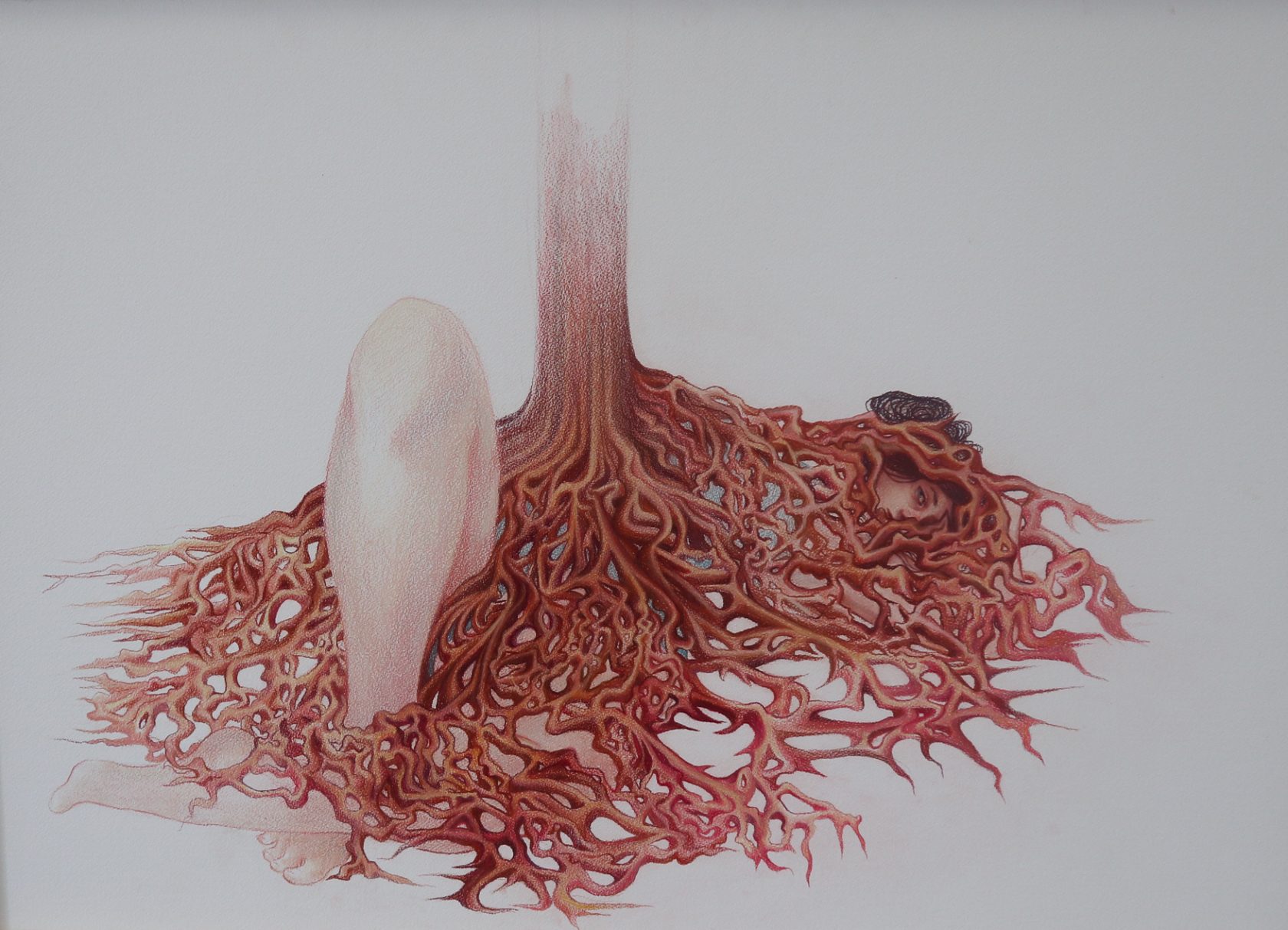
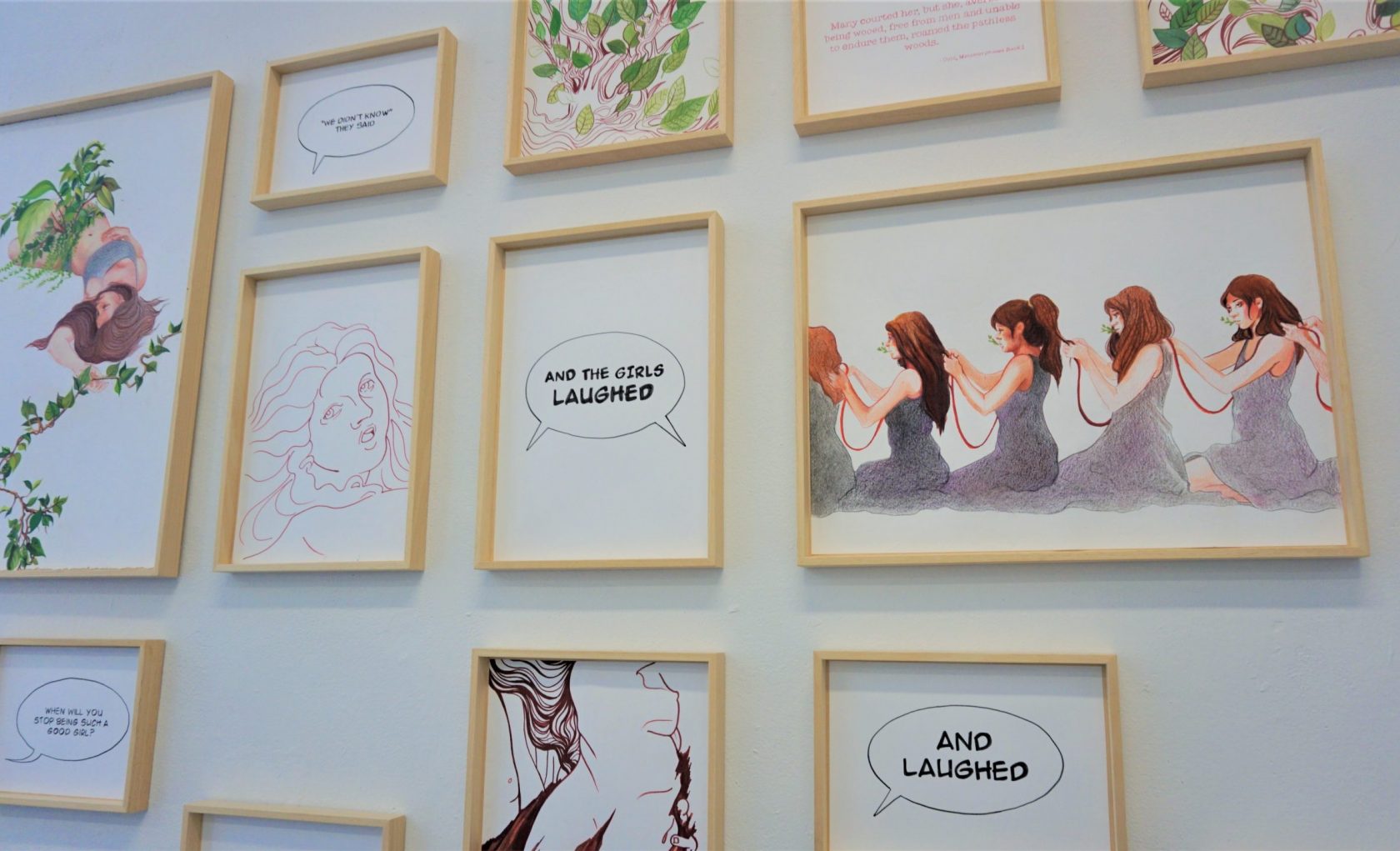
An artist I speak with, Laurence Herfs (BA fine arts), brings up this strong connection between women. Even more, she makes it visible in her project. Her work The year I became a tree is about stories of abuse of the female body. The tree is metaphorically deployed in her artwork to express her own experiences from the last years where she experienced assault which resulted in a burnout. Her artwork refers in a direct and unapologetic matter to the happenings of abuse at the KABK, which became public last year. She tells me how the roots of her tree were tangled up and connected to the other female students who experienced the same unsafe environment at the school.
“But to be a tree also means to be connected to a mycorrhizal network of other stories, and when those roots are exposed, those stories hold the power of collective resistance.”
Her refined drawings are reinforced by poetry and quotes. With her mythological and art historic knowledge and background, she tells a story as old as times. And as an artist, she understands quite well that it is a story that is worth being told. Because her art sincerely inspires.
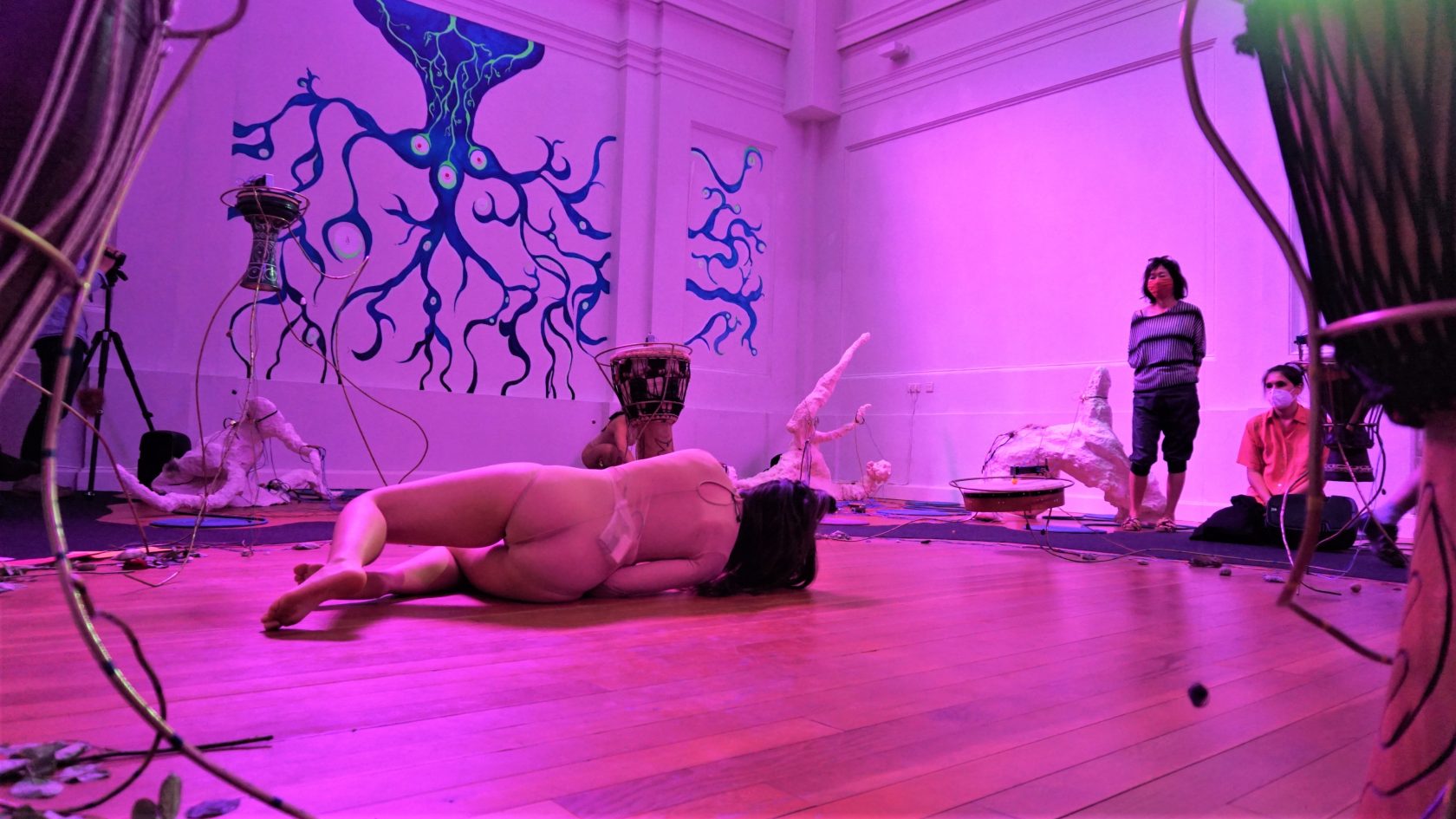
Another room illustrating what women together can accomplish is highlighted in pink light and is accompanied by a ManifestX on the outside wall. They call themselves cyberwitches, and show the audience in performance, installation, sound, and movement how they express themselves as sexual, spiritual, and terrestrial beings. In their manifest they present themselves as the future voice and proclaim to reown, reclaim and reboot the matrix. The cyberfeminist tECkhnO magick collective is formed by Ines DeRu, Pamela Varela, and Ella Hebendanz. The room is consuming and mesmerizing, these artists make you want to stay in this pink void.
Throughout many projects at the BA photography department, I see a red thread. Many art projects focus on how the opinions of others influence our self-image and self-esteem. From childhood, females struggle with a lot of expectations. What does it mean to be a woman? What does it mean to be a sexual being? How do you deal with the narrowmindedness and conservative views of others and how do you escape being shamed in the progress to becoming an adult? The photographers who investigate these matters each have their unique approach. But they can all be defined by the same outcome: “Speak up,” “Embrace yourself,” “Know you’re not alone.”
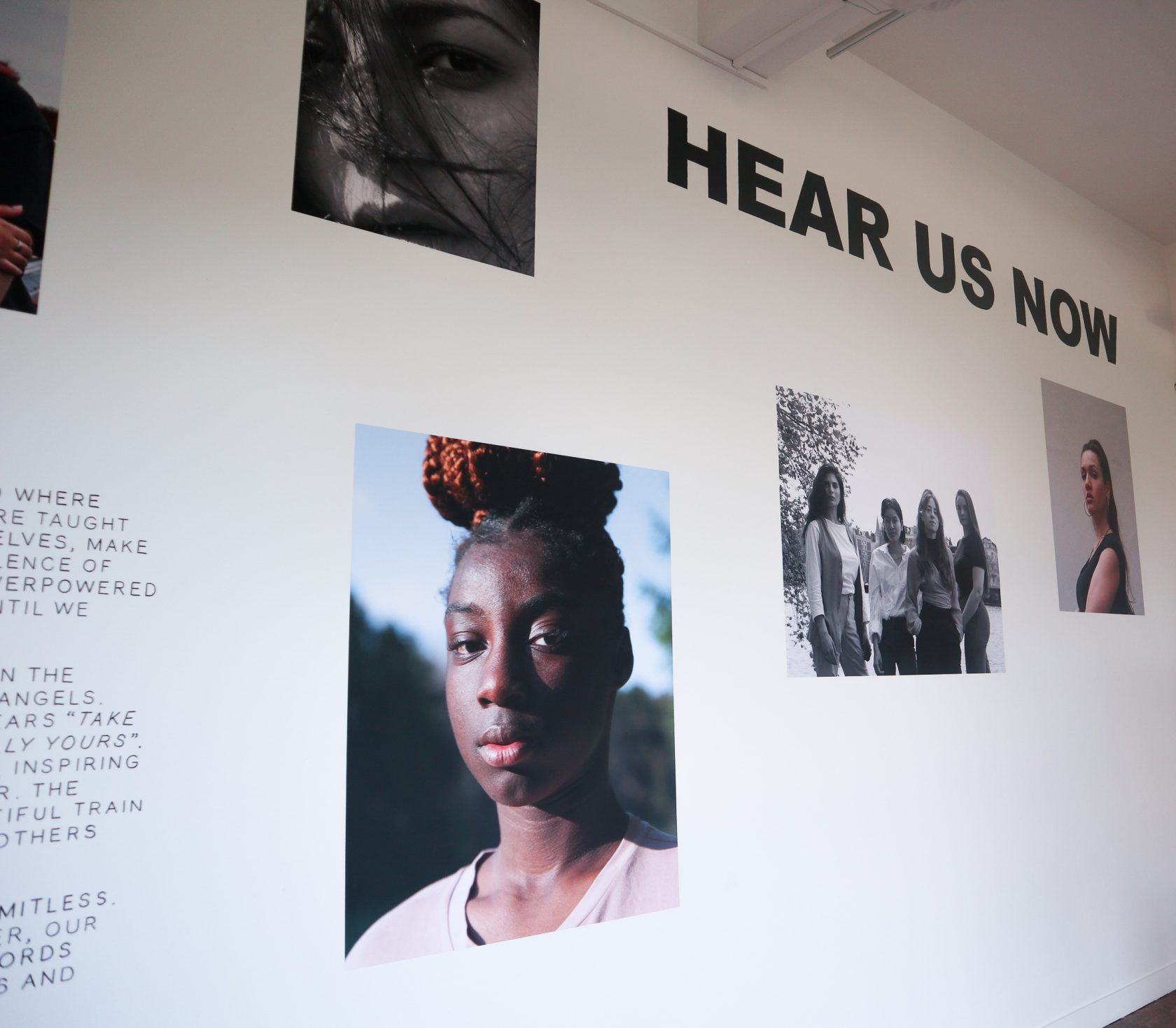
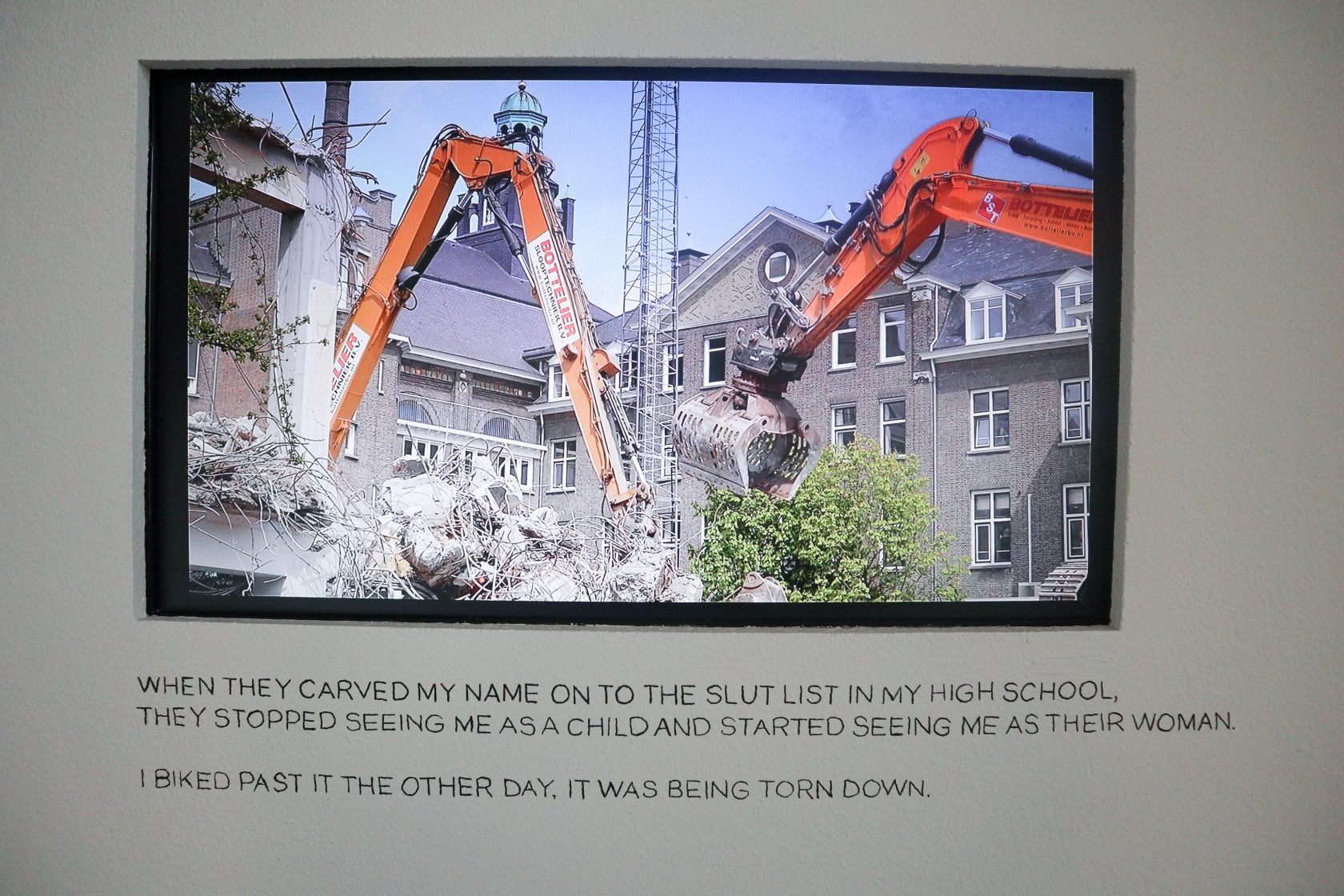
Sophia Maria Favela (BA Photography) Hear us now
The wall text in combination with some strong female portraits highlights the fighting spirit of this artist. “Take up the space that is rightfully yours,” the artist says.
In the room, you can find a book where you can share your experiences. Next to it, you find a video of a high school that is torn down. It is a token of the old and flawed system that is broken down and with it her name that was carved onto a slut list.
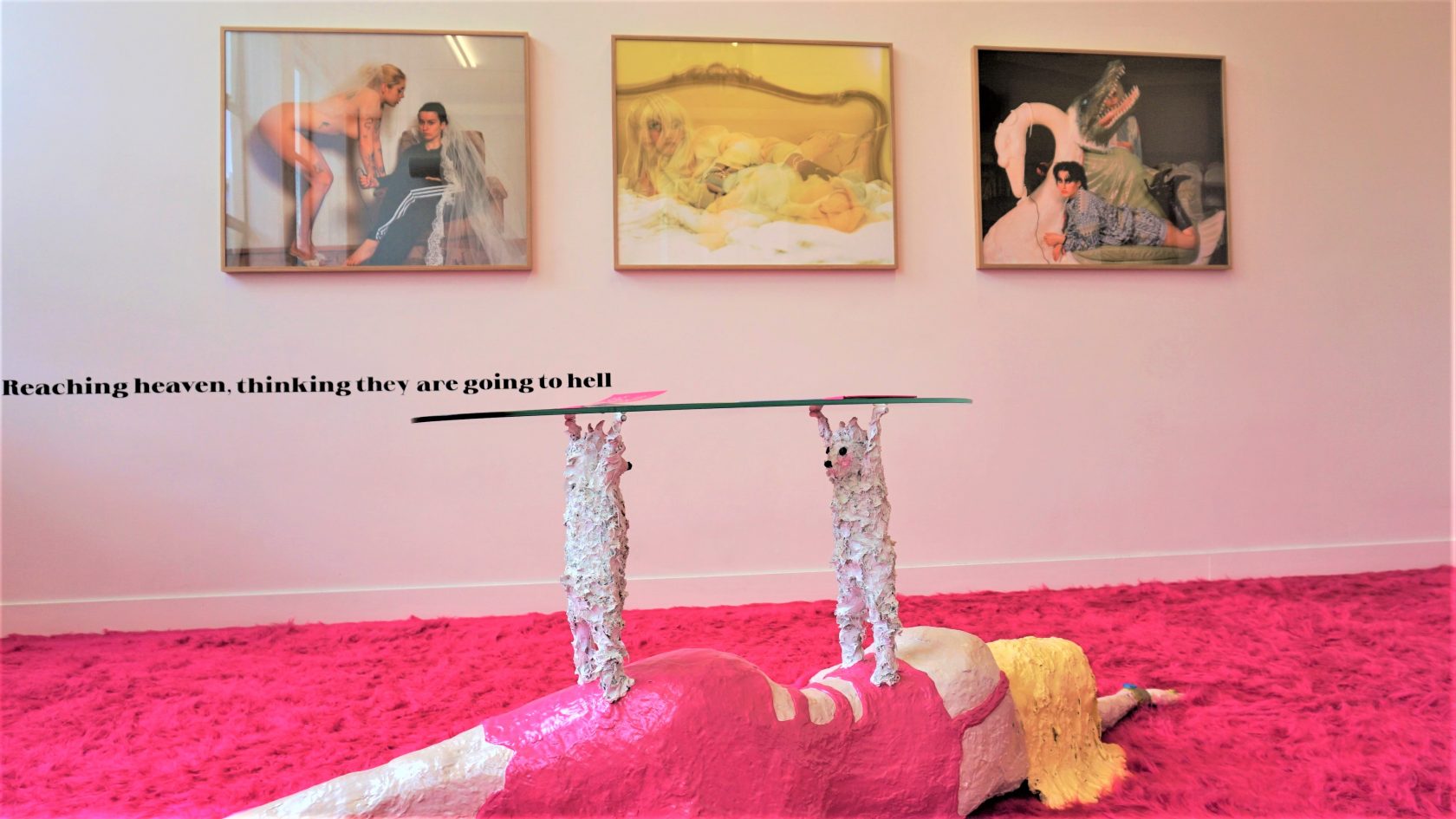
Maria Ciszewska (BA Photography) Reaching heaven, thinking they are going to hell
When entering the room, you cannot escape ‘femininity’. A bright pink fluffy carpet is covering the ground, with a sculpture of a woman laying on it, functioning as a table. The project is kitsch, bright, bold, and sexy. The artist questions the theme of femininity that is being built on traditional values. As a polish lesbian, she wants to portray the joy and the pain that is buried underneath everyday life. She shows us how she would like to see herself and how she would like to be seen by others, which remains a great struggle in such a homophobic place as Poland. Still, the pictures by Ciszewska celebrate women in every aspect.
Lumi Tuomi (BA Photography) Tied Together
The pictures by Tuomi can be described with the word ‘elegance’. This artist makes intimate pictures in nature where she shows hidden stories by those who are shamed into hiding. It is quite another approach from her fellow students, but it still works very effectively. She wants to exhibit “a story of solidarity and understanding, tied together with the experience of hair loss and alopecia.” She shows us how baldness is not a burden, but rather something to embrace. Even though ‘hair’ is by many people linked to femininity, Tuomi makes us aware how constrained this way of thinking is. She challenges traditional gender norms through hair and body hair to create a new and less restricted view of femininity. In doing so she succeeds in extending the female beauty norms with her charming portraits.
Lumi Tuomi, Tied Together, 2021, picture by Dagmar Foest



When I continue my way through the exhibition spaces, the female artists from the bachelor Fine Art attract my attention. Grand paintings, installations, and sculptures are filling the spaces. They leave more to the imagination than the photography department, especially because many seem to be inspired by magical realism. You can find several goddesses and figures inspired by historic and futuristic fantasy. For example, the oil paintings by Menghua Wu and Wumen Ghua, the drawings by Yota Karas, and the glitter paintings by Kelsey Corby.
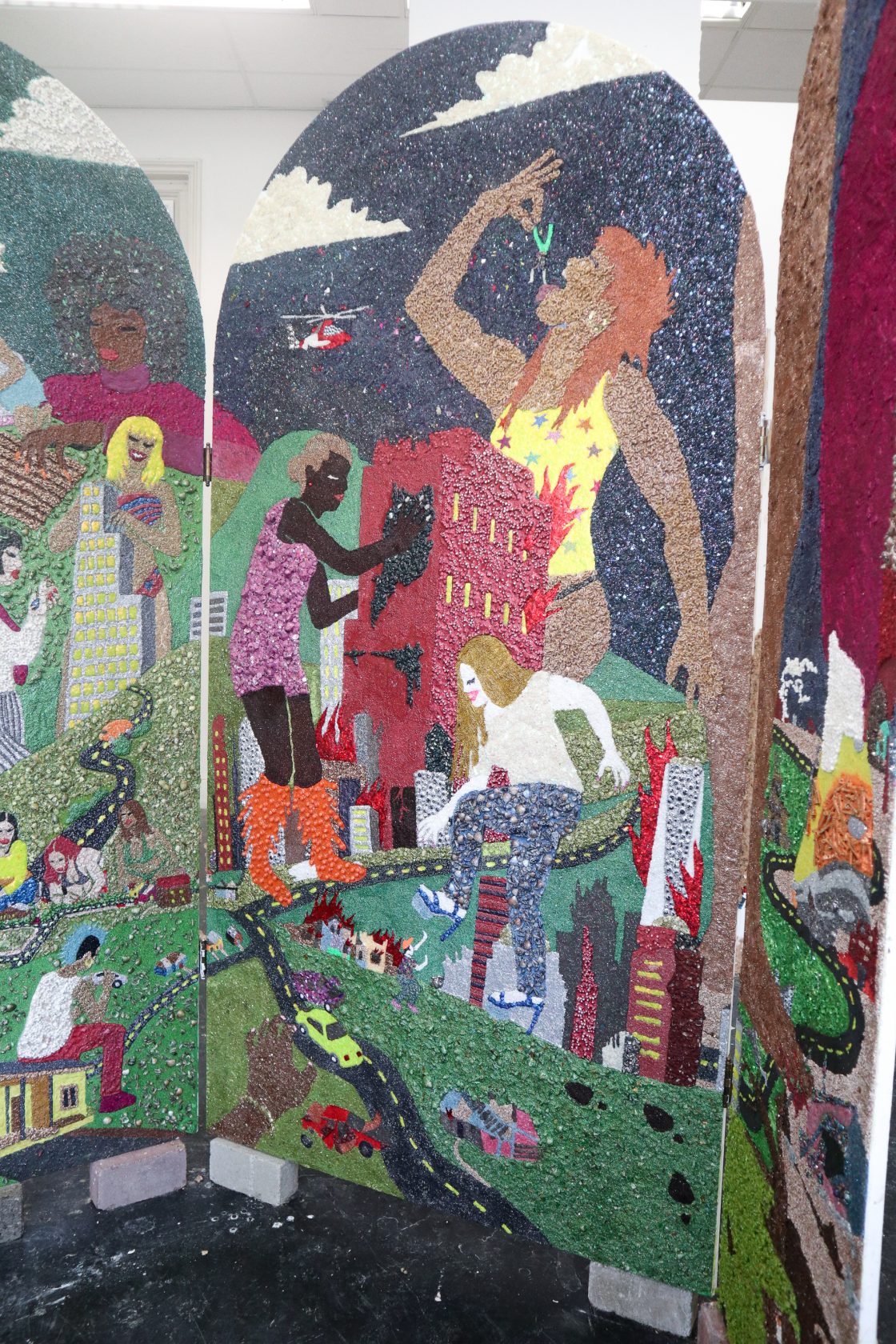
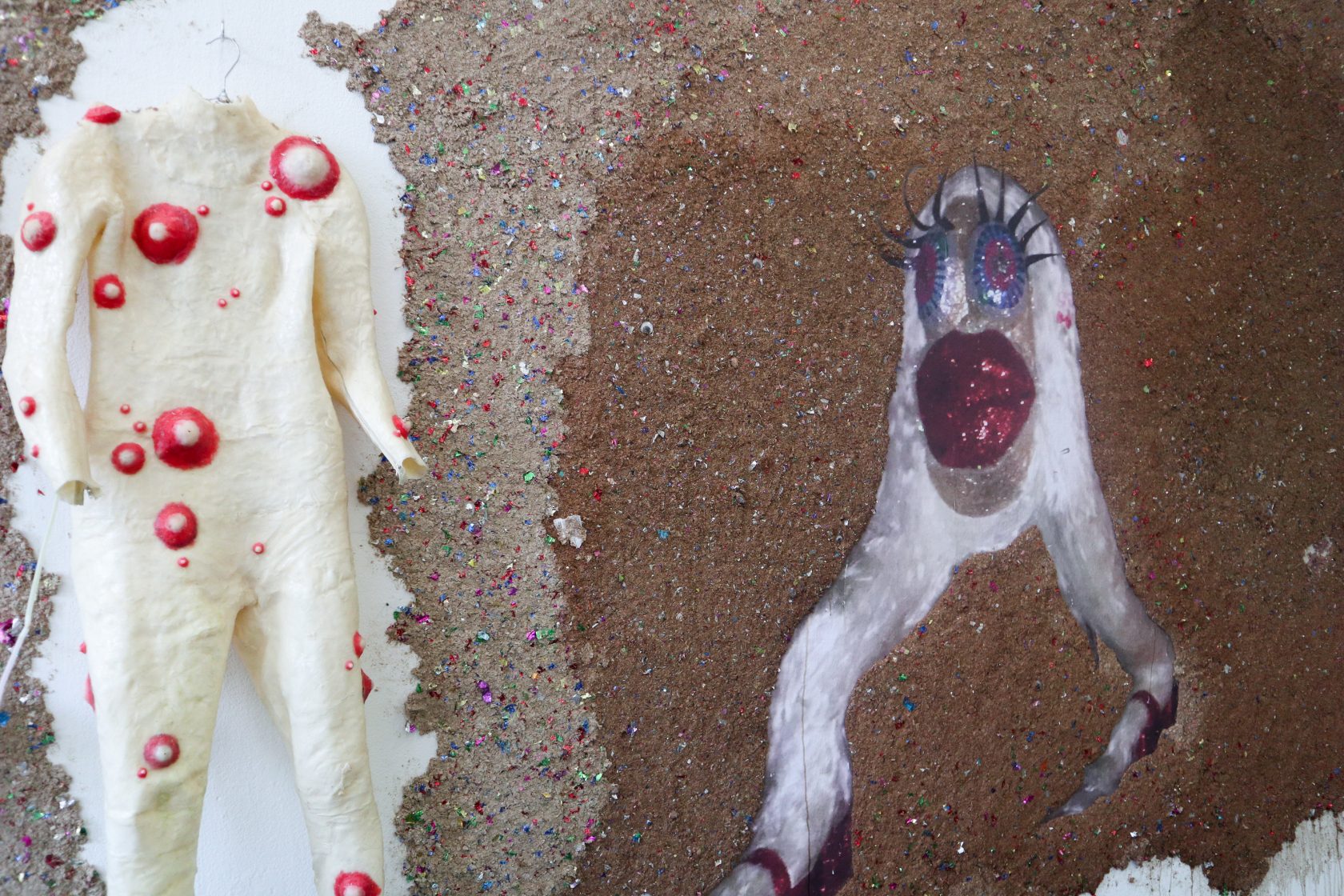
Kelsey Corby (BA Fine Art) The Amazon Apocalypse
The Amazon Apocalypse by Corby is extravagant, glittery, and loud. The artist visualizes a pseudoscientific theory that is based on Bachofens’ writings. This is a theory that portrays feminine persons as predatory entities: or Amazons. A doomsday will fall upon us after the femmes grow in this political climate. It all leads to the day of the apocalypse, led by the amazons. The artist chose to create this story on a triptych, which shows the irony the artist possesses, it becomes like a prophecy, something holy. I cannot contain a large grin when I walk past the artwork.
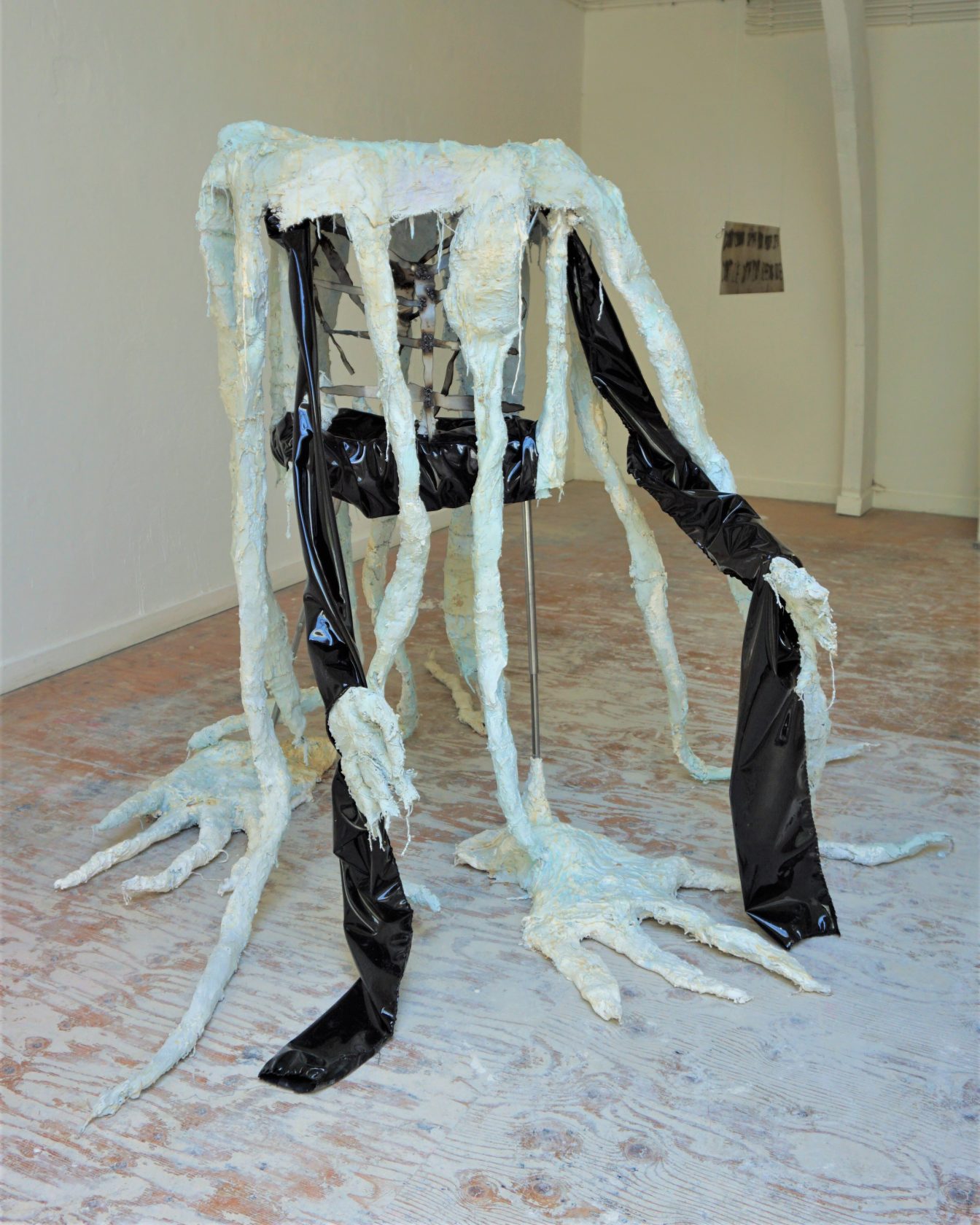
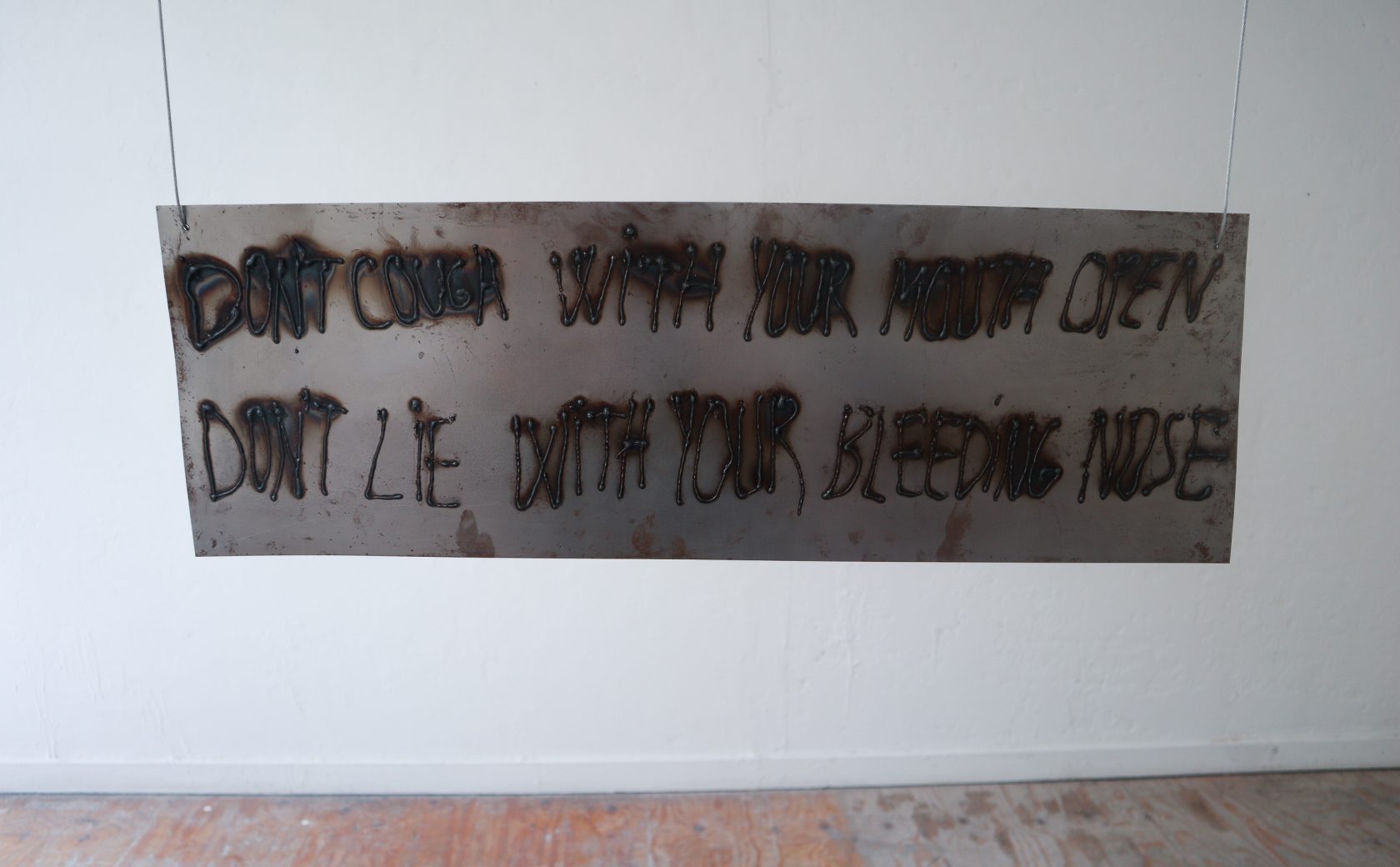
Anca Bârjovanu (BA Fine Art) How to grow thick skin
Another project that gets to me, also because of the catchy title and text, is How to grow thick skin.
The sculpture that is standing like an embracing yet restrained creature is fascinating to me. I don’t know why it gets to me, but it does. The artist does not make it explicit about how to grow thick skin as a woman, nevertheless that is what I get from it. Resourcefulness is something we learn over time, “but sometimes you fall and all you can do is just get up and start walking.” I wish this creature would stand next to me in the future.
Ellen Yiu (BA Fine Art) Take My Home Away
Confused but intrigued I am wandering through the artspaces where the works by Ellen Yiu are presented. Miniatures, lots of eggshells, colorful quilts hanging from the ceiling, and hair on the wall. This artist is intuitive and wants to show shifting layers of purpose and meaning with her hand-crafted and collected objects. She addresses the feelings of insecurity in these uncertain times of the pandemic but wants to stay optimistic for the future. The work is exploring the idea of the home, both culturally and in spaces and objects. Afraid to stand on an eggshell or take some hairs of the wall I leave the room, wondering if this was the intention of the artist to make me aware of the fragile state of my surroundings.
Ellen Yiu, Take My Home Away, 2021, picture by Dagmar Foest
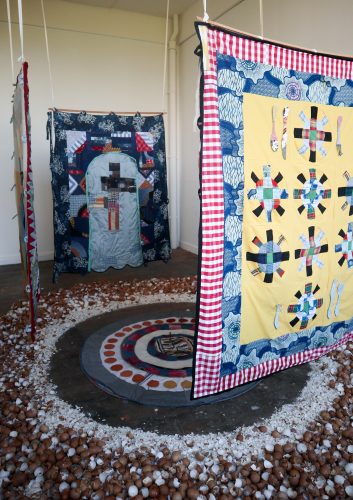
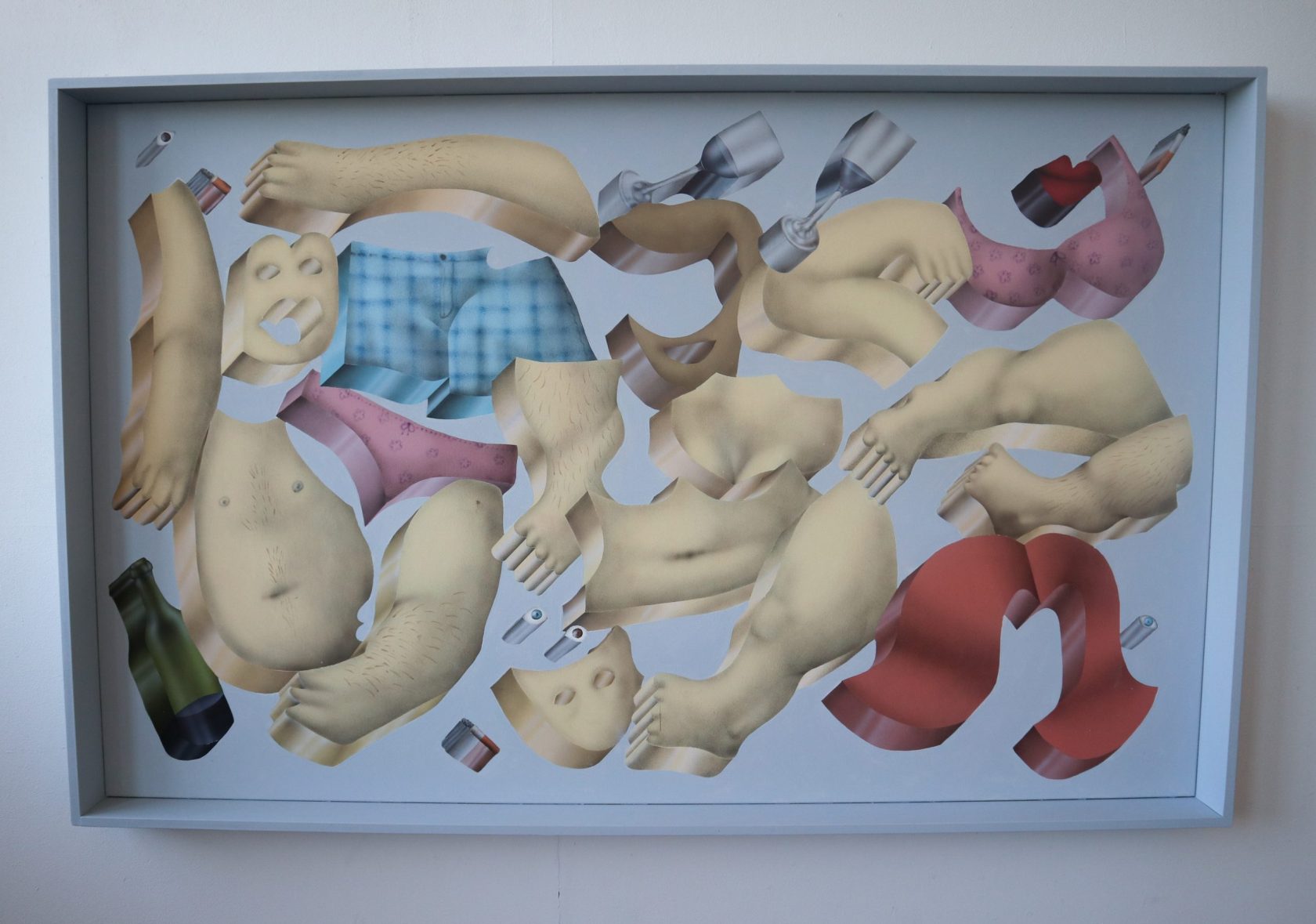
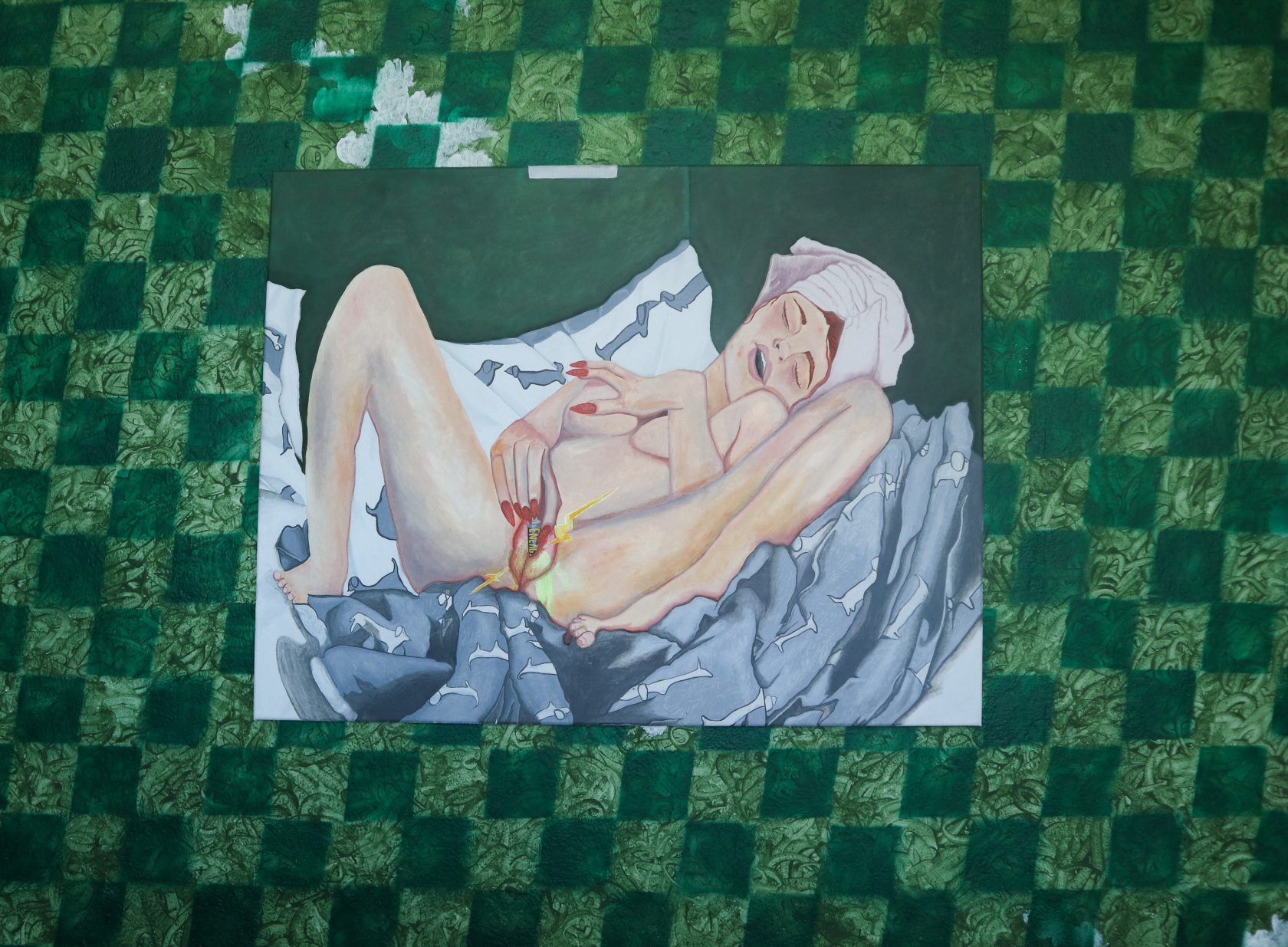
Content, inspired, and empowered I leave the Graduation Show. The variety of art is great this year, as is the ambiance. The male and other gender-fluid artists are also representing innovative works of art. Nevertheless, do I think that the voices of the women this year are the loudest, deserving to be heard. The female gaze is a necessary one in our current climate, these artists won’t let you forget.
